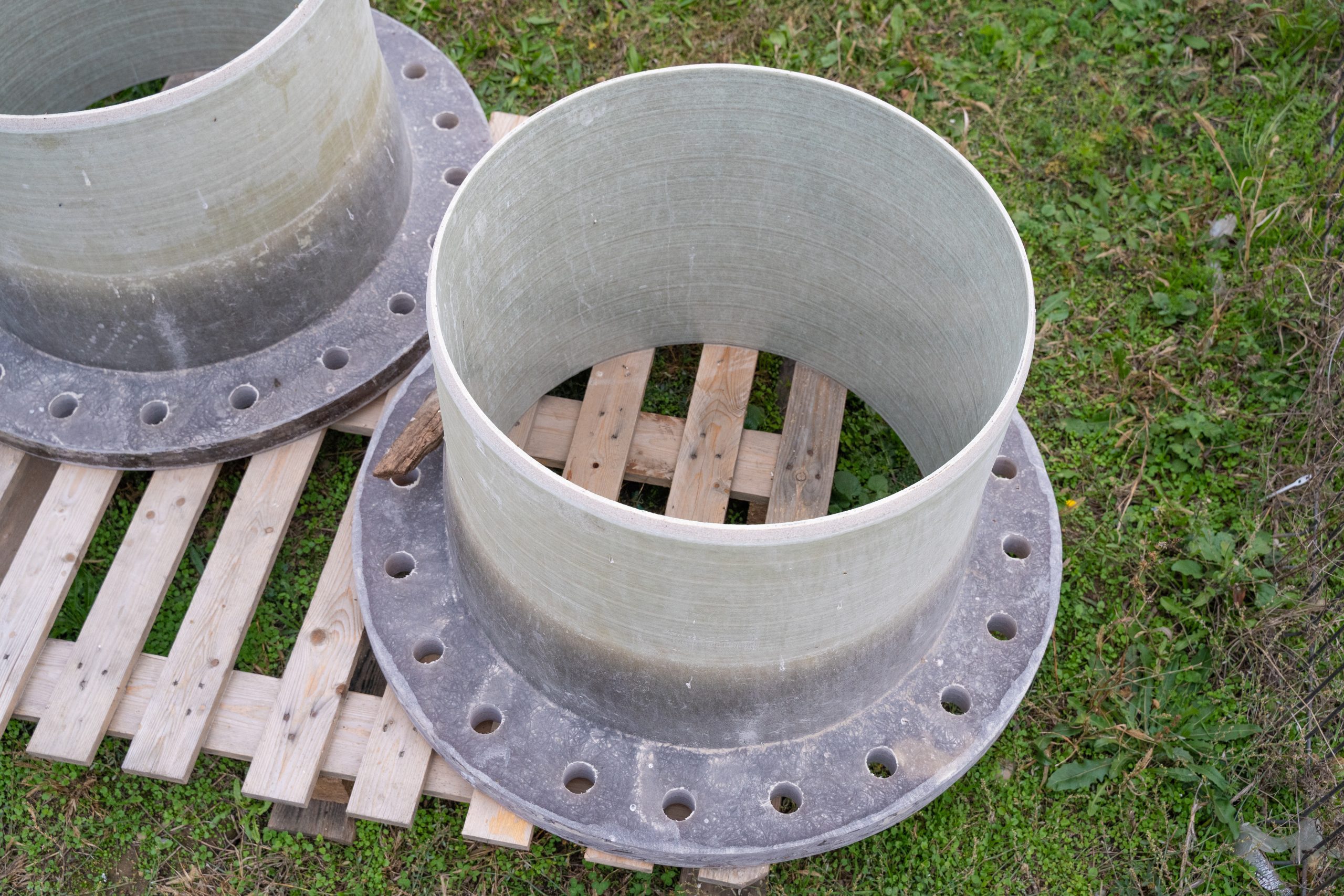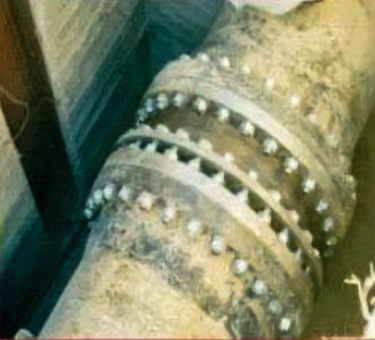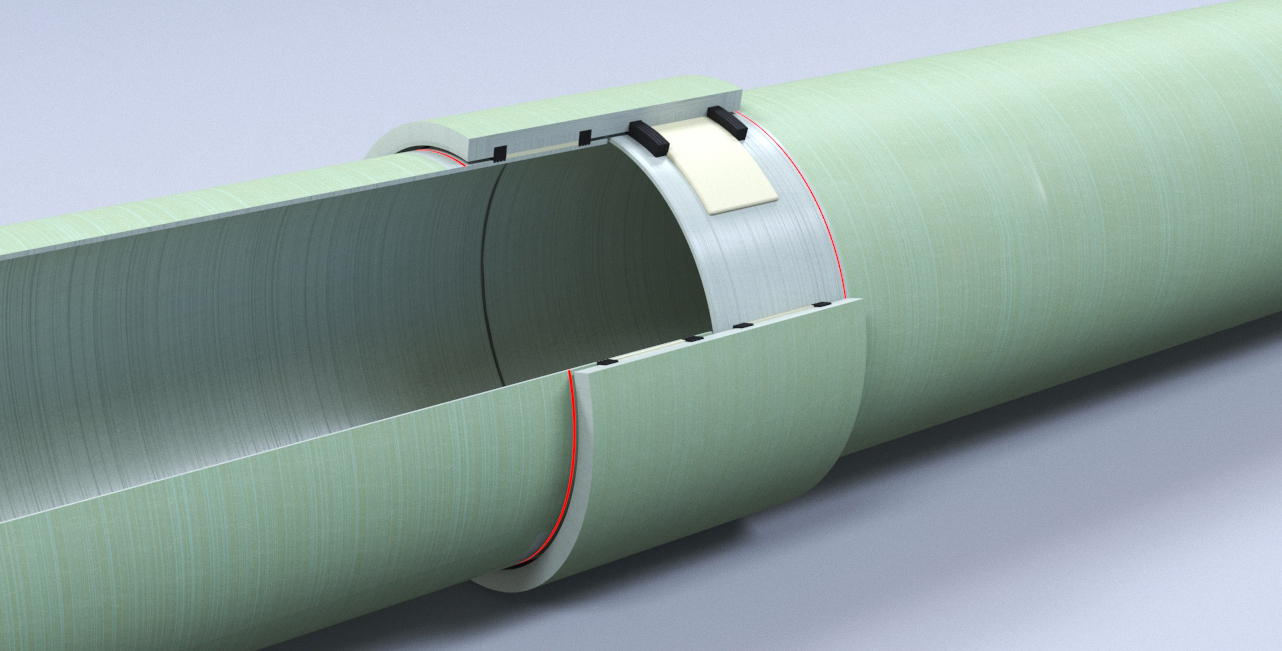GRP joining elements
For uniaxial pipelines, unrestrained joints are usually used, and it is necessary to use thurst blocks. These take up the loads that occur when there are directional changes. Only restrained joining elements are used for biaxial pipes.
Rorex offers several types of GRP pipe joining elements.
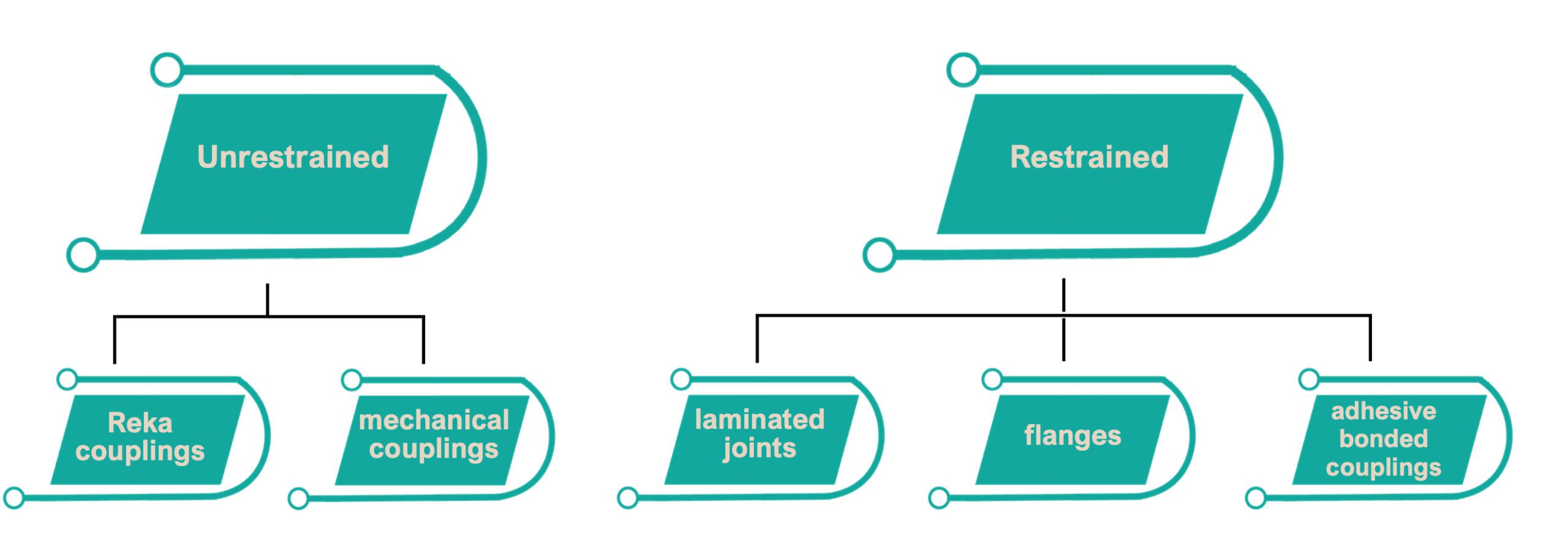
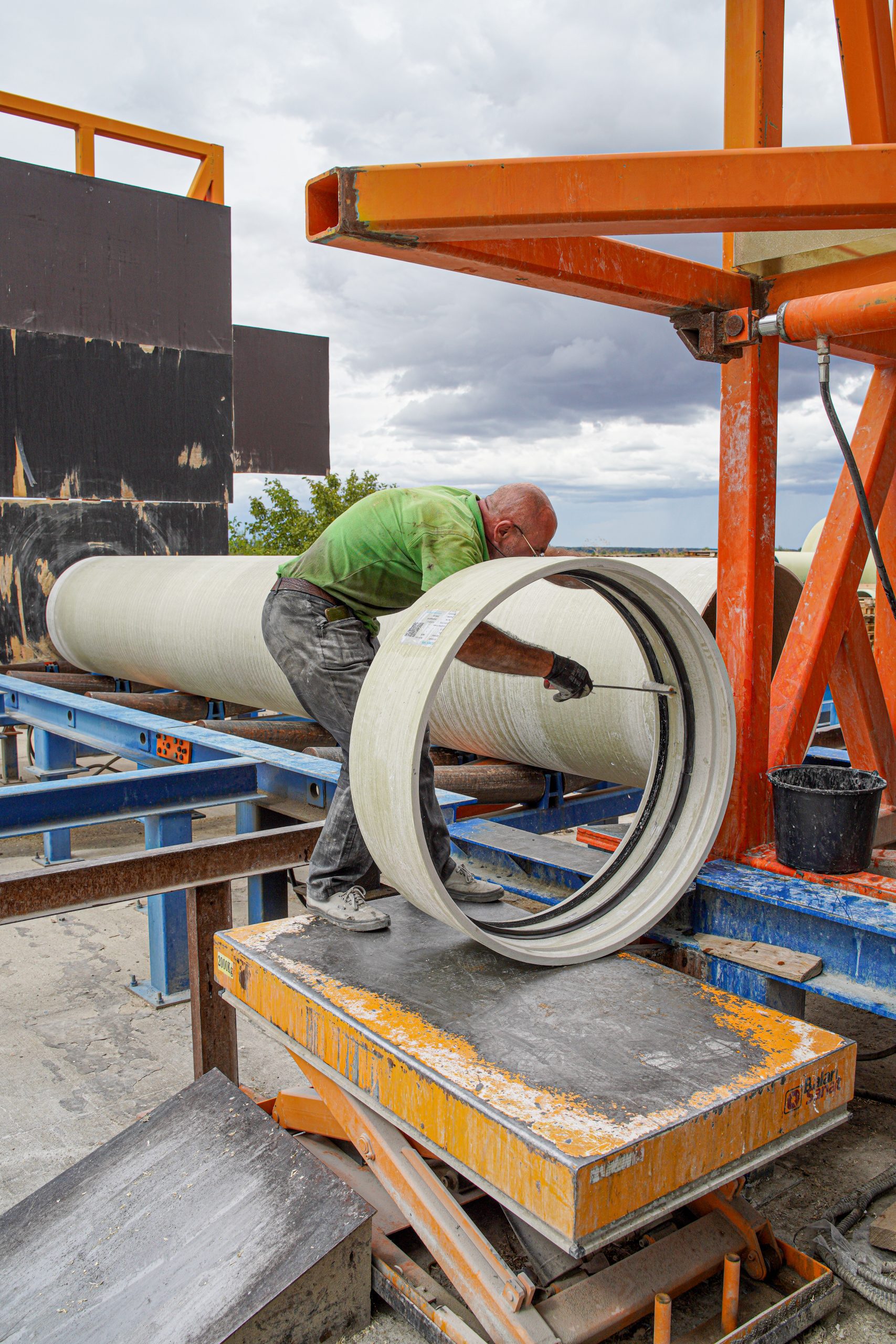
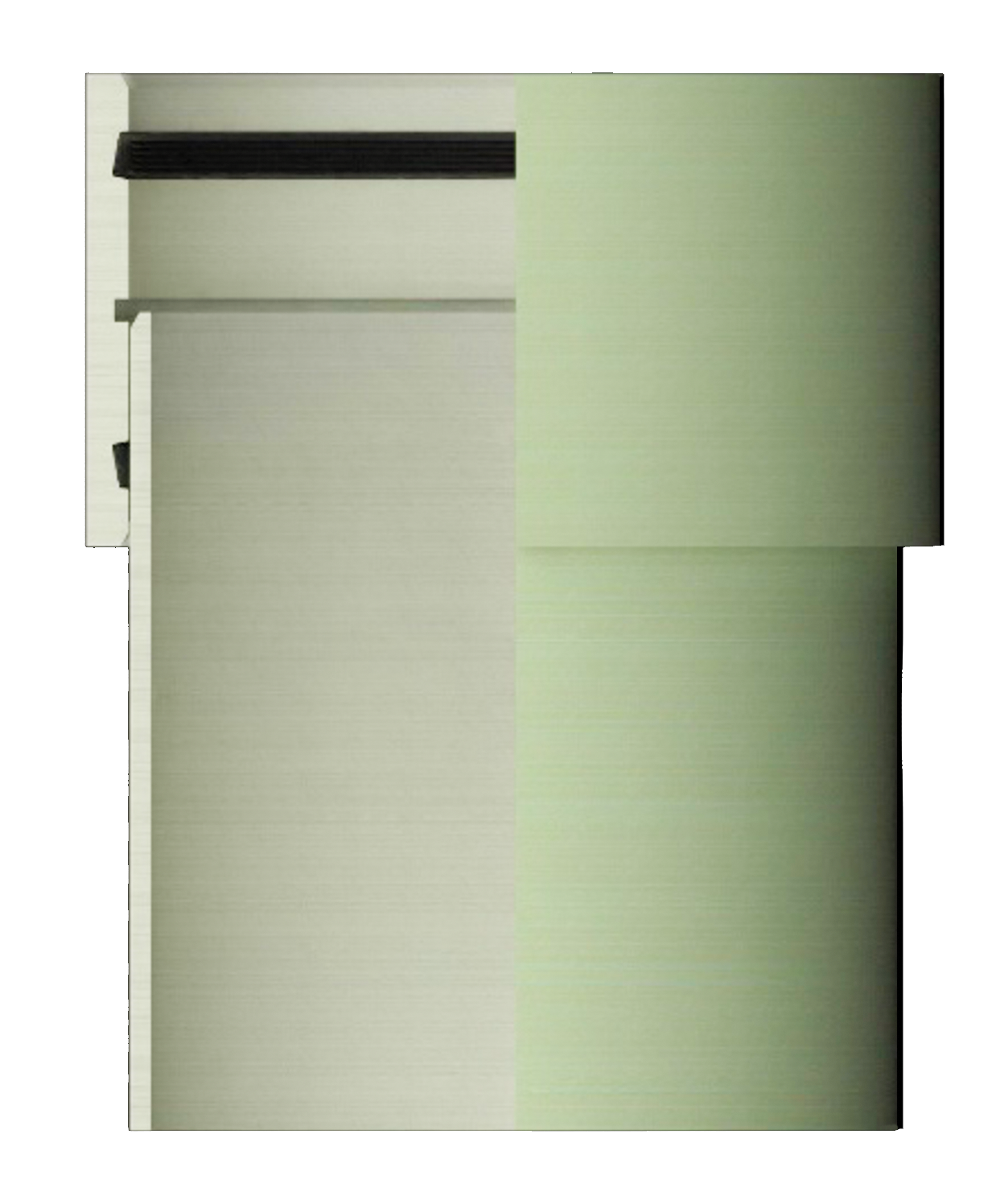
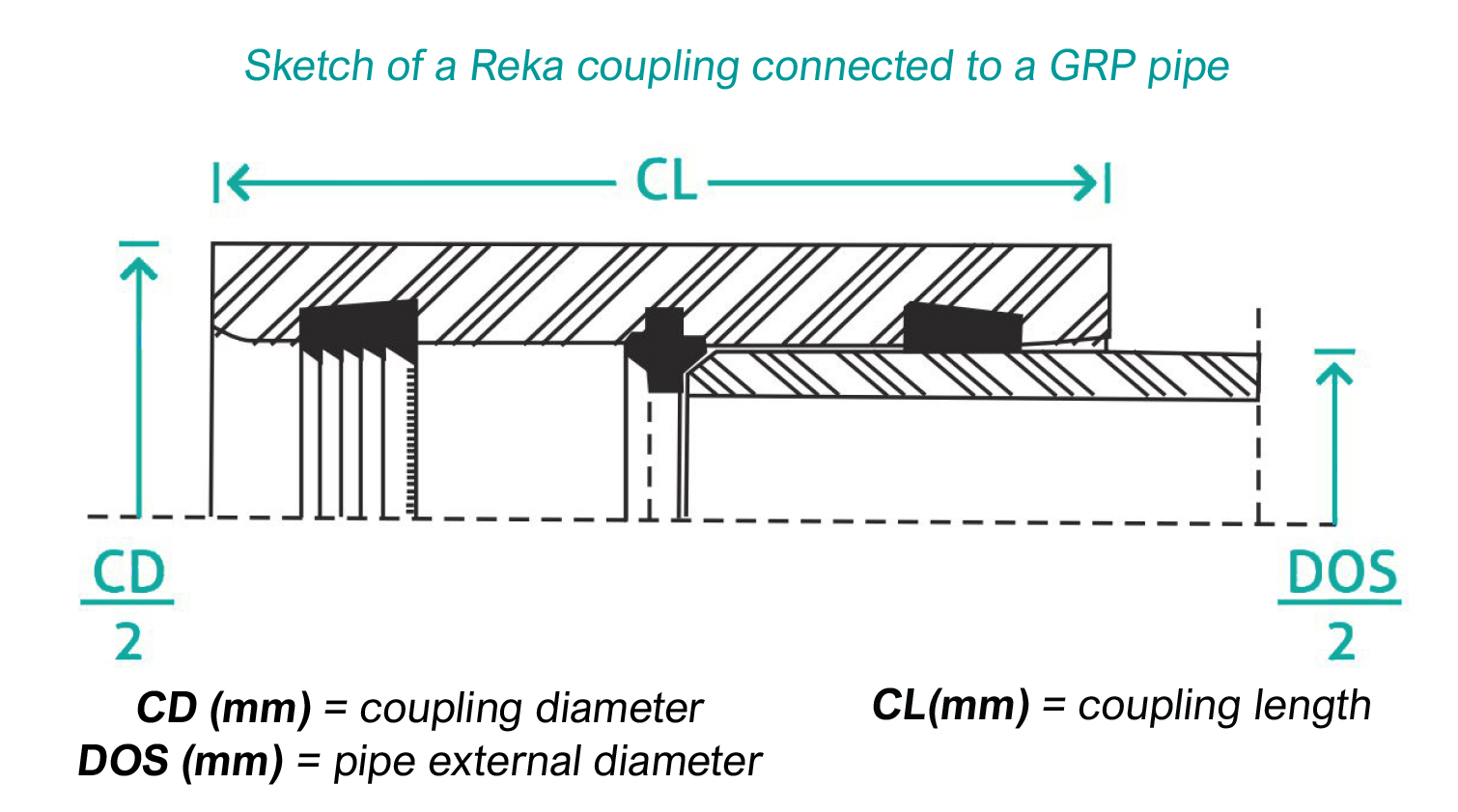
Further details on Reka coupling sizes can be found in the ROREX General Presentation Catalogue in the “Downloads” menu.
Further details on Reka coupling sizes can be found in the ROREX General Presentation Catalogue in the “Downloads” menu.
Mechanical steel couplings
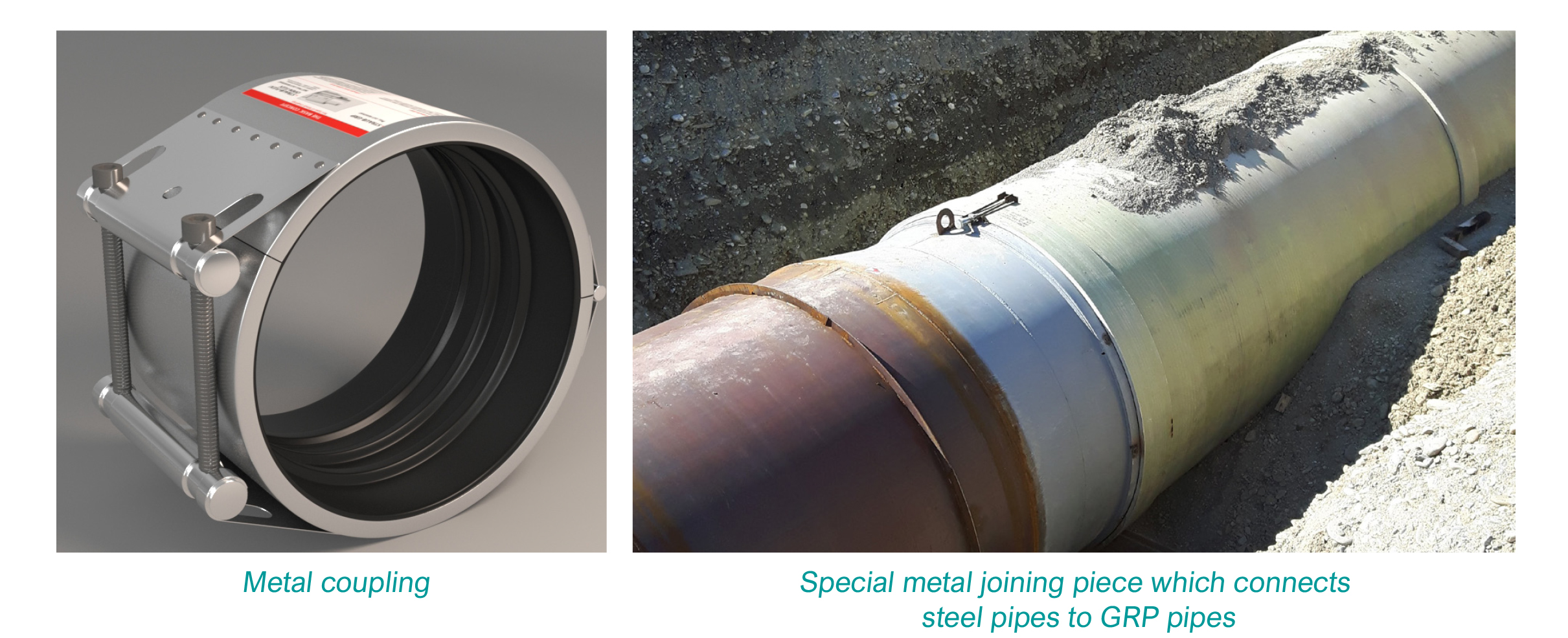
These couplings consist of a steel mantle with an interior sealing rubber sleeve. The steel mantle can be made of stainless steel, galvanised steel or epoxy-protected steel.
For mechanical steel couplings, ROREX collaborates with the Spanish company ARPOL. They are manufactured in three versions: ARPOL INSTAL, ARPOL REP and ARPOL TRANS.
An alternative to these couplings is the use of a special, custom-made steel joining part. The steel casing is machined on the lathe to have the same outside diameter as the GRP pipe. One end of this piece is welded to the steel pipe and the machined end is joined to a Reka coupling.
Further details of ARPOL mechanical steel couplings can be found in the ROREX General Presentation Catalogue in the “Downloads” menu.
Laminated joints
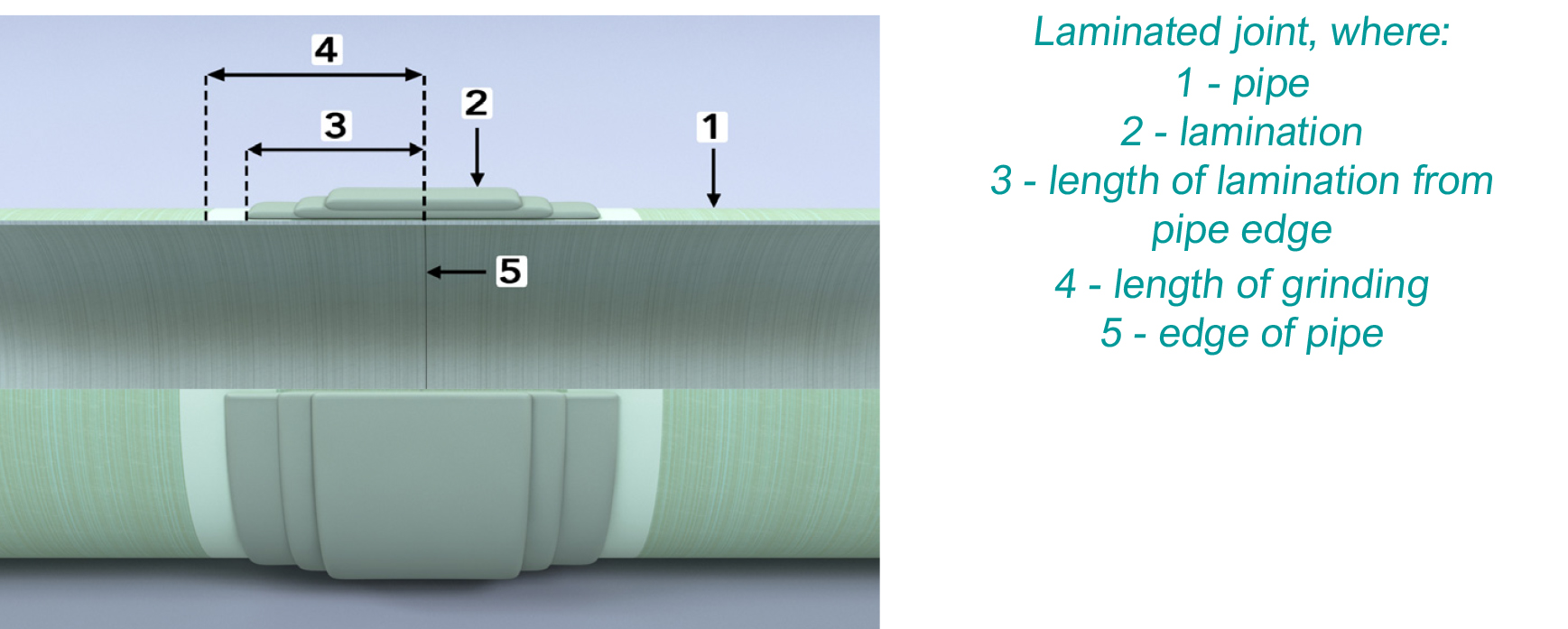
Flanges
